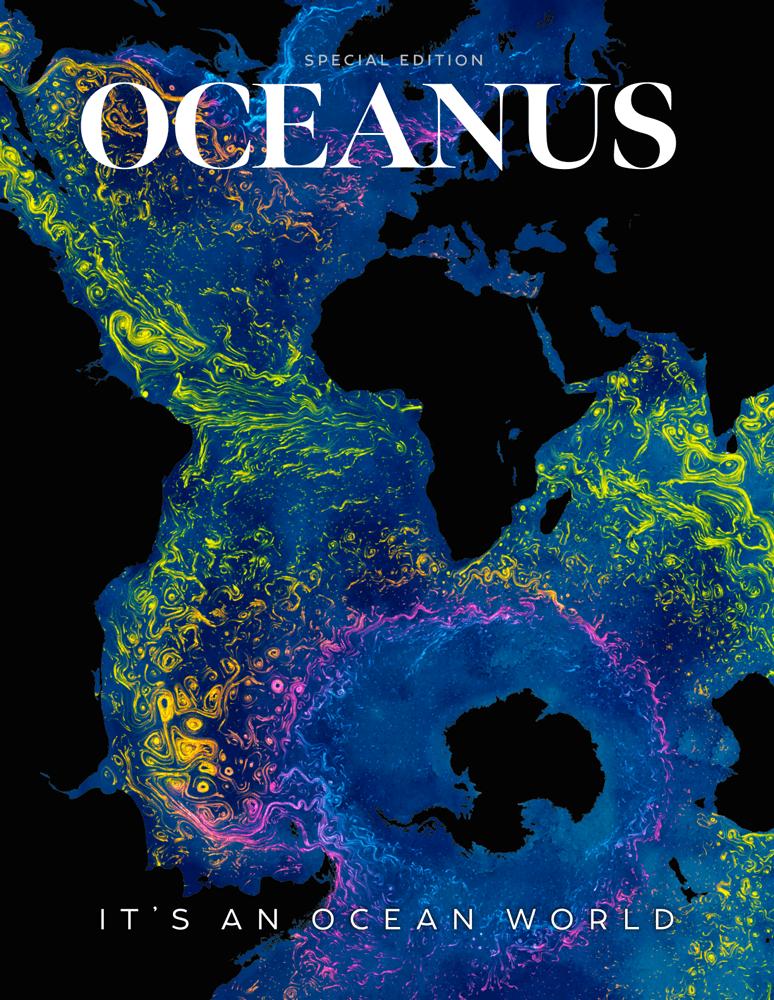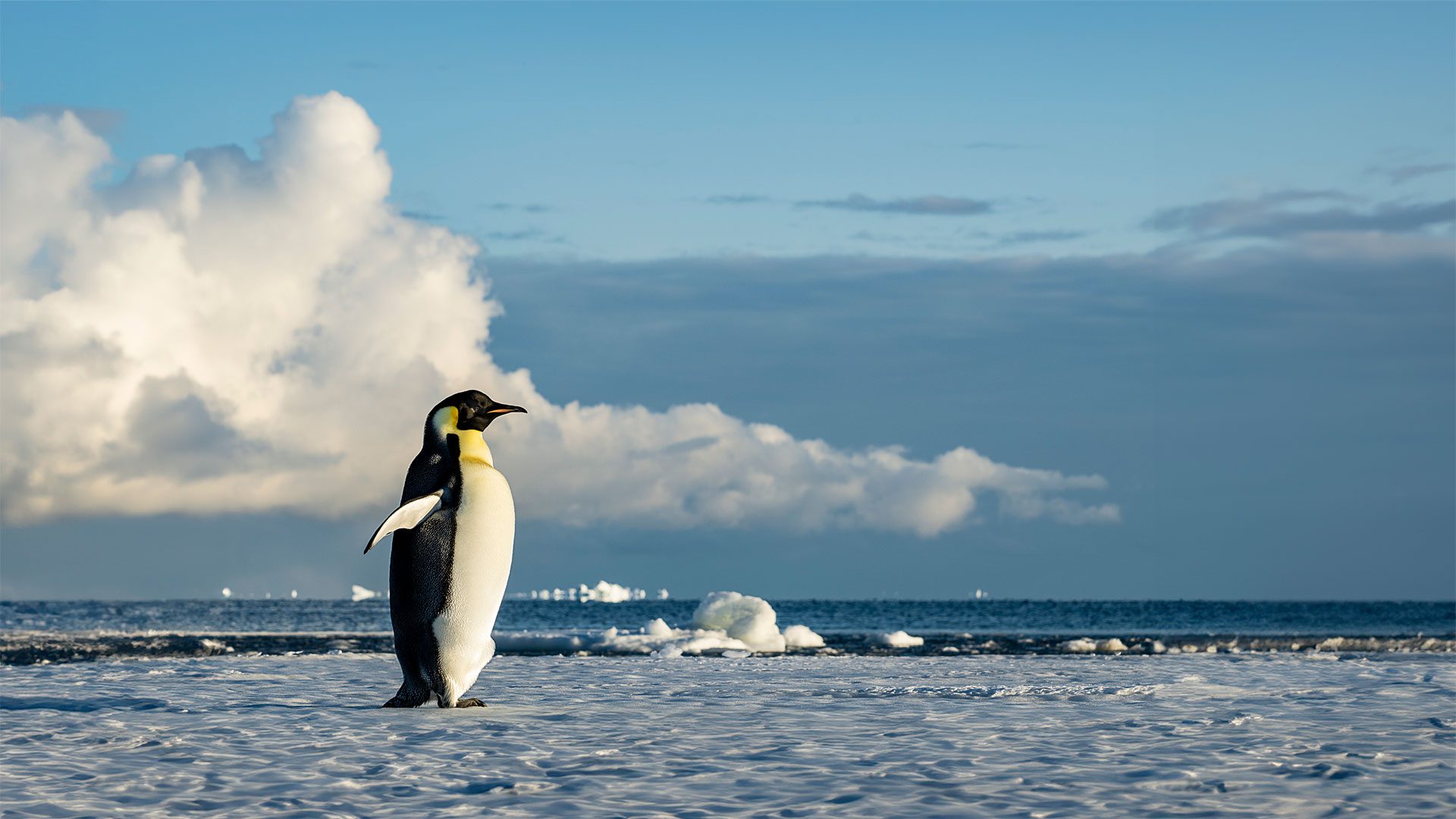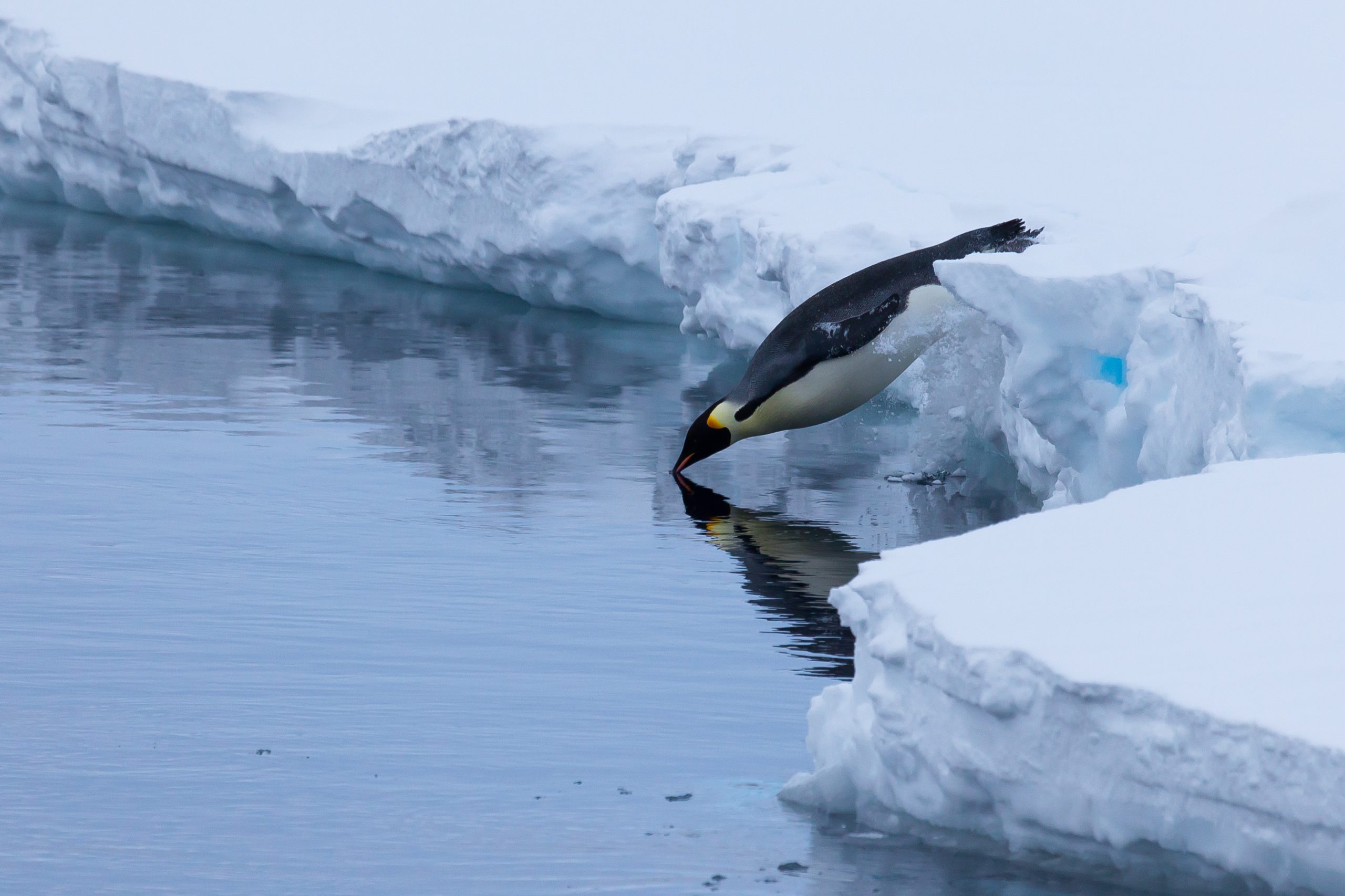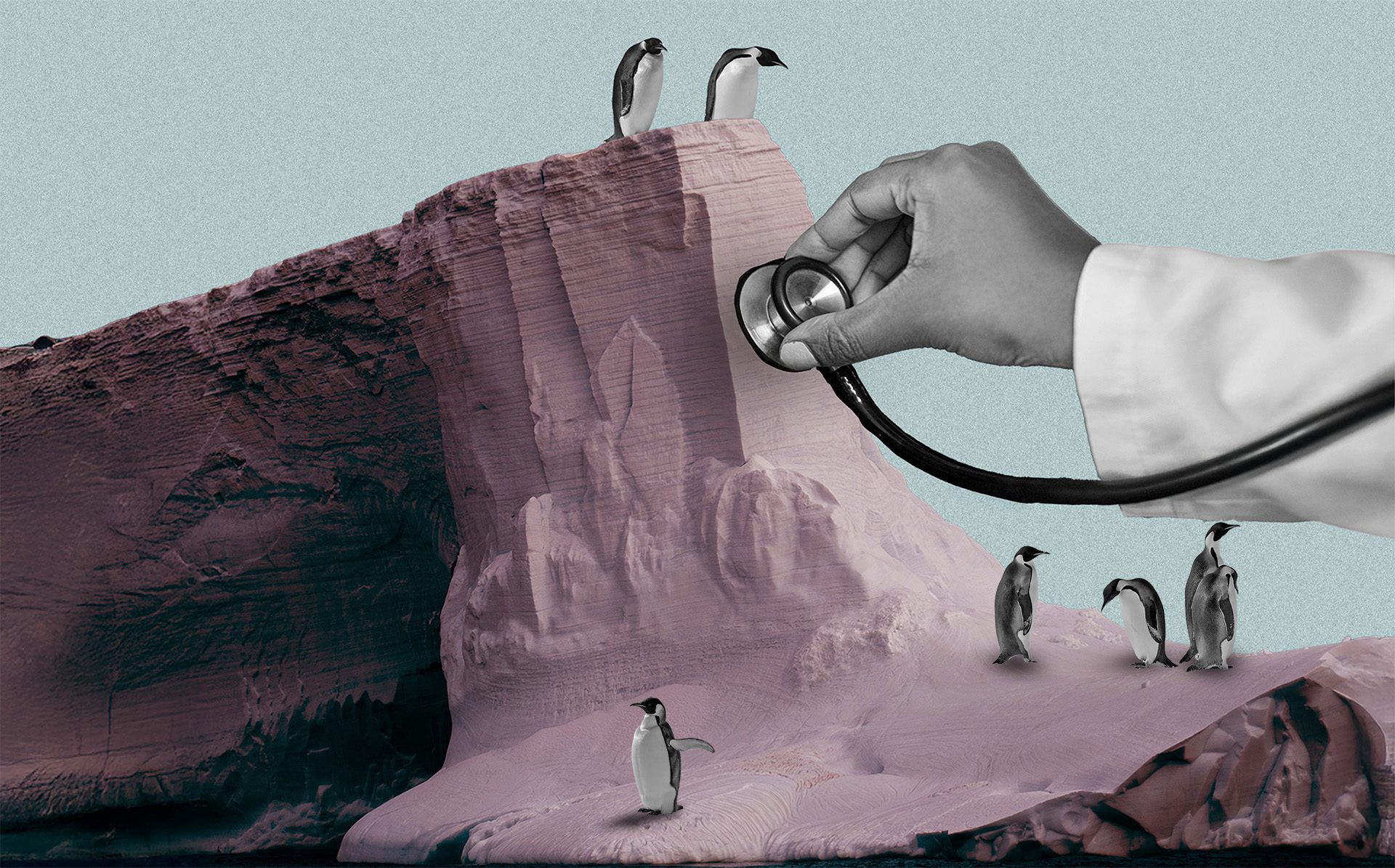
A polar stethoscope
Could the sounds of Antarctica's ice be a new bellwether for ecosystem health in the South Pole?
Estimated reading time: 4 minutes
It happens in March. Just once a year, a lucky few scientists get to peer out the ice-encrusted windows of Neumayer Research Station III in Atka Bay, Antarctica, to see thousands of emperor penguins waddling by. On average, these regal birds traverse between 50 and 125 miles, migrating invariably through whiteout snowstorms and around deep chasms, treacherous cliffs, and impassable icebergs to assemble on the sea ice for breeding. It’s been hypothesized that they navigate, not just by waymarkers in the landscape, but also by a mysterious set of sonic cues from the ice below them—sounds that WHOI researchers are now trying to decode. “They know what’s a good spot, yet we still have zero clue how they make that out,” says WHOI Associate Scientist Daniel Zitterbart. "Understanding what emperor penguins determine as good, stable sea ice is something I'm really interested in.”
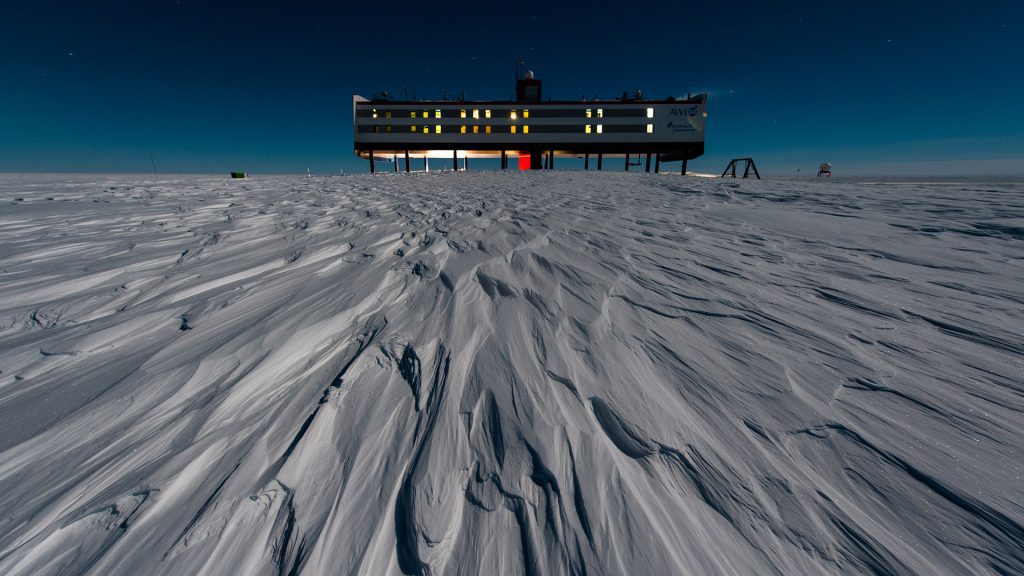
The German Antarctic research station Neumayer Station III, taken at night/darkness. (Photo by Stefan Christmann, © Alfred-Wegener-Institut)
Zitterbart was one of those fortunate spectators at Neumayer between 2008 and 2009, when he overwintered at the observatory as a geophysicist. The fact that these penguins always managed to wind up on a sturdy patch of sea ice that formed just weeks before their arrival seemed nothing short of miraculous to him. Deciphering the soundscape these penguins use, he says, has been an elusive yet critical piece of information for those seeking to conserve the species.
“I’m in the business of trying to understand the entirety of the penguin environment, and acoustics are part of it,” says Zitterbart. “Emperor penguins can hear, they can walk, they can feel, and yet we don’t know what piece of their environment helps them decide where to settle annually.”
Studying the sounds around Antarctica isn’t new. Acousticians have had their ears to the ice since the 1980s. Dotting the Ekström Ice Shelf, where Neumayer Station III sits, are several high-tech sensor packages. Underwater microphones, called hydrophones, dangle through the ice to listen to the aquatic environment below, seismometers on the ground and ice measure the mechanical waves that rumble through the frozen landscape, and atmospheric sensors listen for acoustic waves echoing through the air. However, where most scientists often analyze just one of these datasets, Zitterbart has long wanted to look at them in tandem. In 2024, he seized an opportunity to work with WHOI seismo-acoustic scientist Gil Averbuch, who was happy to help him make sense of the data.
“We have observations in water, ice, land, and air,” says Averbuch. “What’s unique in this case study is we don’t usually analyze the mechanical, seismic, and acoustic signature of the ice’s dynamic processes in all three media.”
By overlapping datasets from all the observatory’s sensors on his computer, Averbuch can identify unique acoustic signals that are distinct to certain processes. Tidal movements and passing storms out at sea, for instance, cause the ice to flex and buckle, generating laser-like zips and zaps that can be heard in the hydrophone recordings. More dramatic events, like an iceberg collapse, produce a deafening roar. The seismometers and acoustic sensors, which capture frequencies too low for human ears, help Averbuch triangulate these events to specific points on the map.
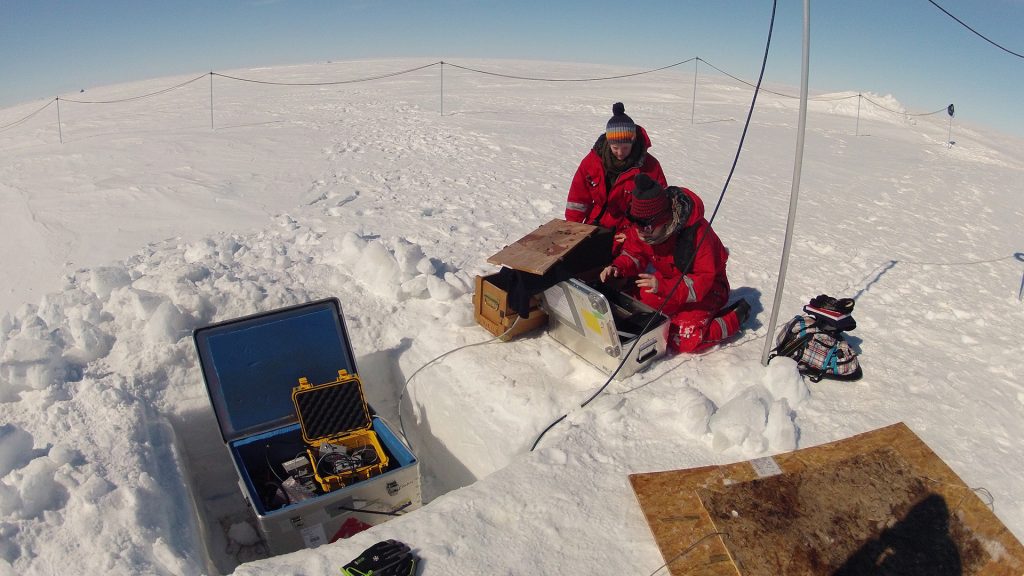
Scientists lower a passive acoustic recorder (similar to the one from which Averbuch retrieved data) beneath the Antarctic ice sheet to study the region's soundscape. (Photo by Karolin Thomisch, © Alfred-Wegener Institut)
“Each process has different characteristics,” says Averbuch. “By using different signal processing methods, we can relate them and determine whether these signals are coming from the same source or event, such as a calving iceberg.”
Acoustic data from collapsing ice are of particular importance to Zitterbart. Codifying the sounds before and after these events could lead to an important diagnostic tool, potentially allowing other scientists to survey the integrity of key ice shelves and the sea ice around the continent. And unlike satellite imagery, the acoustic sensors along Antarctica can record continuously, unobscured by passing storms or cloud cover.
In the future, Zitterbart hopes these acoustic insights will improve how policymakers designate marine protected areas to protect emperor penguins. Warming temperatures spurred on by climate change melt roughly 136 billion tons of Antarctic sea ice each year, according to NASA. As that ice recedes, krill fisheries may be tempted to exploit the newly unobstructed inlets, reducing the emperor penguin’s already finite food source. Knowing ahead of time where emperor penguins will migrate may help conservationists preemptively protect these spaces. However, Zitterbart notes, the project is still too early in its infancy to claim such outcomes. For now, learning more about how Antarctica’s most iconic bird sees—and hears—the world around them is an exciting scientific frontier in its own right.
“We know they won’t stop and keep breeding in the same location just to die—they’re smart animals and will be on the move,” says Zitterbart. “We have a chance now to try and understand where they’ll go next.”
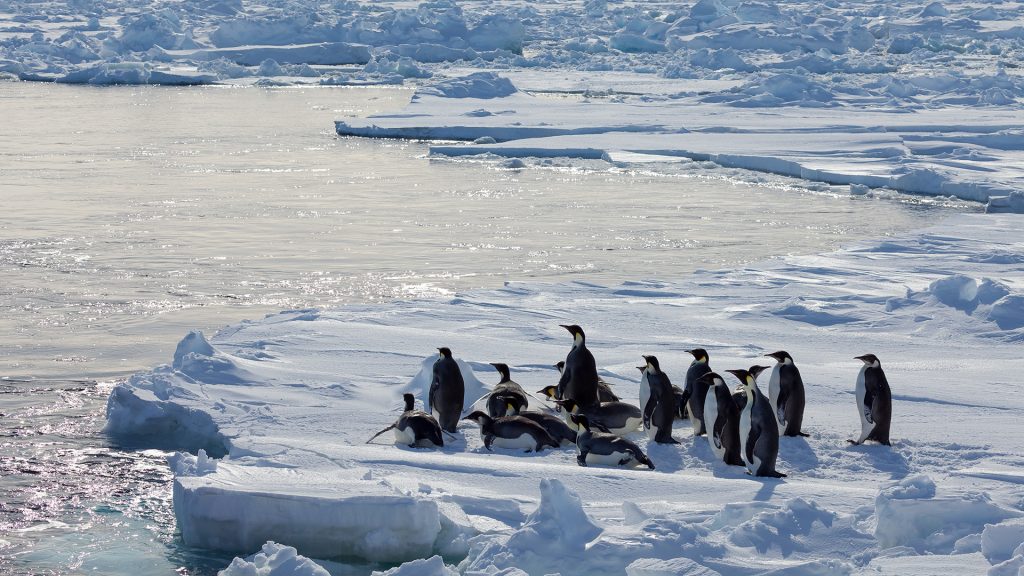
Emperor penguins gather at the edge of the fast ice in Antarctica. (Photo by Peter Kimball, © Woods Hole Oceanographic Institution)
